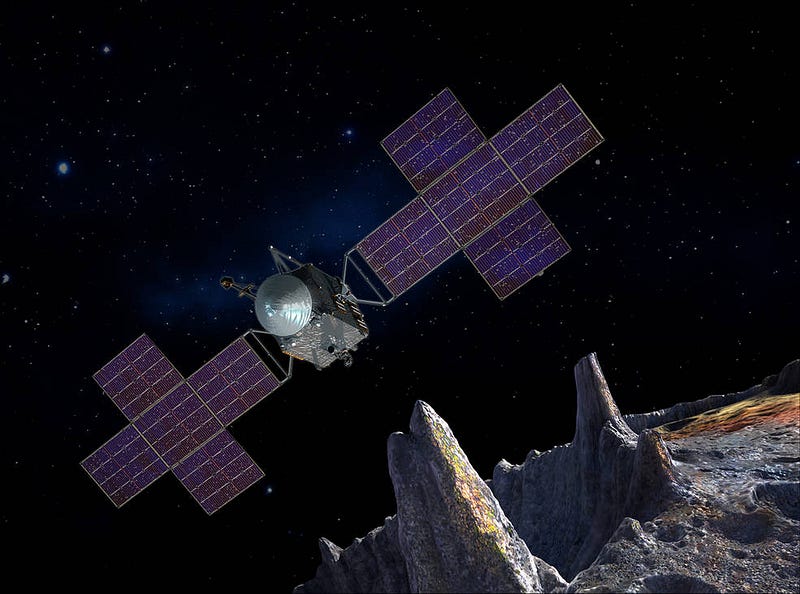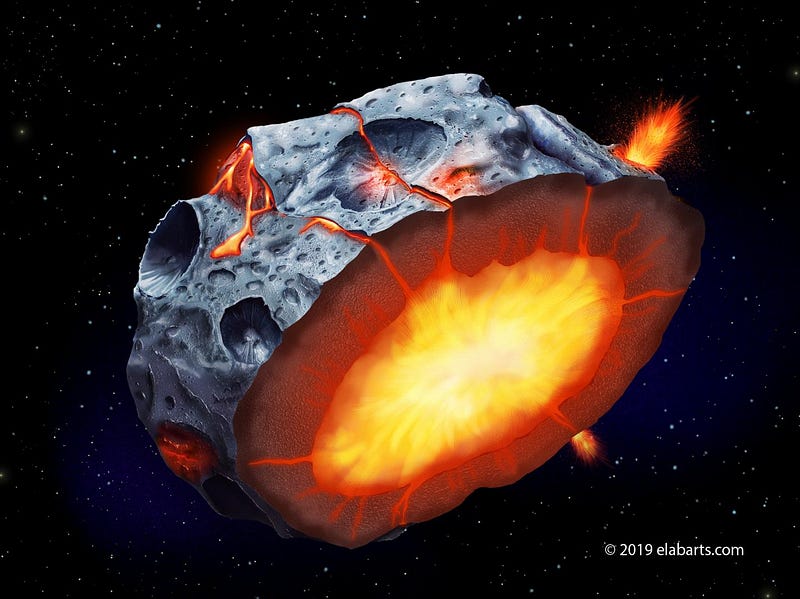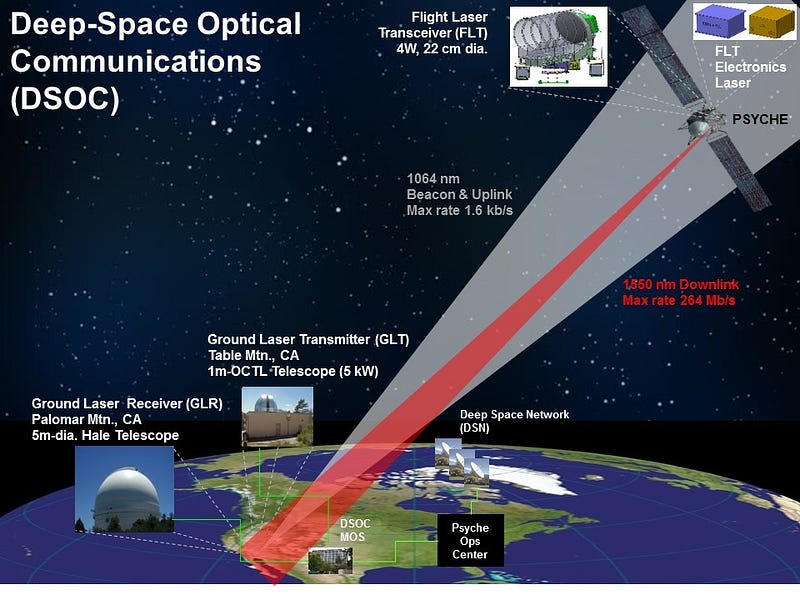Exploring the Mysteries of Metal Asteroids: The Psyche Mission
Written on
Chapter 1: The Fascinating World of Metal Asteroids
Recent studies have revealed that asteroids composed of metal might host some of the most peculiar volcanic activity in the Solar System. Research indicates these celestial bodies could have erupted with streams of molten iron, suggesting a dynamic history. Metallic asteroids likely originated from heated blobs of metal that cooled and solidified while drifting through the cosmos. A group of astronomers posits that these asteroids might have formed volcanoes that released liquid iron onto their surfaces.
In 2022, NASA is set to launch a spacecraft aimed at the largest metal-rich asteroid, 16 Psyche. This innovative spacecraft, equipped with advanced communication technology, is expected to arrive at its destination in 2026. In preparation for this mission, scientists have been investigating how these metal-rich asteroids transitioned from molten states in the frigid void between planets, leading to intriguing findings.

Chapter 1.1: The Formation of Metal-Rich Bodies
During the formation of our solar system, smaller planetary bodies known as planetesimals often collided. These collisions could strip away the outer layers of bodies with metallic cores, leaving behind significant metal structures. The heat generated from these impacts caused the remnants to harden rapidly as they cooled.

"In some instances, crystallization occurs from the center outward, which may not lead to volcanism. However, in other cases, crystallization can happen from the surface downward, resulting in a solid metal crust with liquid beneath," explains Francis Nimmo, a researcher at the University of California, Santa Cruz (UCSC).
Chapter 1.2: The Psyche Mission Unveiled
Once the spacecraft enters orbit around Psyche, it will spend 21 months conducting detailed studies of this metal-rich world and mapping its surface. This represents the first opportunity for scientists to closely observe a planet largely made of metal.
On its journey to Psyche, which orbits the Sun at a distance three times that of Earth, the spacecraft will swing by Mars in 2023, using its gravity to assist in its trajectory.
Chapter 2: A Leap Forward in Communication
As the spacecraft orbits Psyche, it will utilize laser technology for communication with Earth, as opposed to traditional radio waves. Engineers hope the Deep Space Optical Communications (DSOC) system will enable much faster data transmission back to Earth compared to conventional radio systems.

If successful, the DSOC could transmit information at rates between 10 to 100 times faster than current radio methods. This technology may one day be applied for communication with human explorers venturing further into the Solar System.
"I am excited that Psyche will be equipped with the Deep Space Optical Communications package… The technology is groundbreaking and appeals to my inner geek. Who wouldn’t want to communicate using lasers while significantly increasing our data exchange capabilities?" shares Lindy Elkins-Tanton, director of the School of Earth and Space Exploration at Arizona State University.
This mission holds the potential to provide astronomers with deeper insights into the early Solar System and the development of metal-rich planets, including our own Earth.
"One Month From Launch: Psyche Mission to a Metal Asteroid (Live Briefing) - This briefing outlines the objectives and significance of the Psyche mission."
"The NASA Psyche Mission: An Electric Journey to a Metal World - This video explores the technological innovations and goals of the Psyche mission."